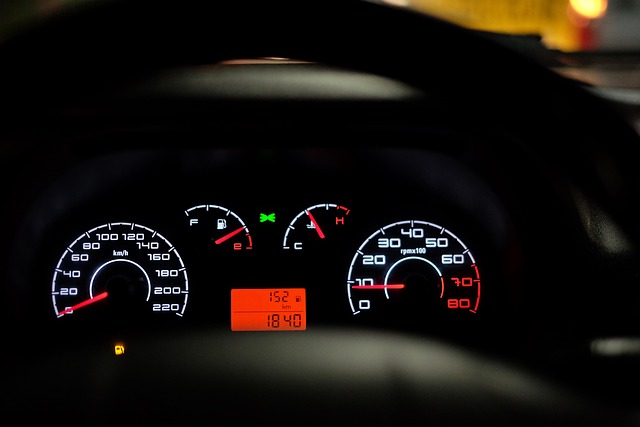Looking to register your car in California? This comprehensive guide walks you through the entire process, from understanding key requirements to completing the application. We’ll focus on a crucial step: vin verification, ensuring your vehicle’s unique identifier is accurate and valid. By gathering necessary documents and following our step-by-step instructions, you’ll be on your way to smooth California car registration in no time.
- Understand the Requirements for Car Registration in California
- Gather Necessary Documents for Vehicle Registration
- Perform VIN Verification: A Step-by-Step Guide
- Complete the California Vehicle Registration Application
- Submit Your Application and Pay the Required Fees
Understand the Requirements for Car Registration in California

Before registering your car in California, it’s essential to understand what’s required. The state mandates a thorough process that includes several key steps. One critical component is the Vehicle Identification Number (VIN) verification. This unique code serves as a fingerprint for your vehicle, ensuring its authenticity and history are accurately documented. In California, a VIN inspection is typically conducted by a designated official or through a mobile vin inspection service.
Additionally, you’ll need to provide specific documentation, such as proof of ownership and insurance, along with the necessary fees. These requirements aim to maintain a reliable vehicle registration system, ensuring that all cars on California roads meet safety and legal standards. A successful VIN verification is a crucial step in this process, establishing a solid foundation for your car’s official registration.
Gather Necessary Documents for Vehicle Registration

Before you start the registration process, it’s crucial to gather all the essential documents required by the California Department of Motor Vehicles (DMV). This includes your vehicle’s Registration Application form, which can be obtained online or in person from any DMV field office. Along with this, prepare your Vehicle Identification Number (VIN) verification report. Conducting a VIN inspection ensures that your car matches the details provided in the registration application, enhancing the efficiency of the registration process. You may opt for a mobile VIN inspection or visit an approved auto repair shop for this step.
Don’t forget to bring along valid identification documents such as a driver’s license or state-issued ID card, proof of insurance, and any applicable fees. Additionally, if you’re transferring ownership, include the seller’s signed title and a bill of sale detailing the transaction. Ensuring these documents are ready beforehand will streamline your trip to the DMV and help avoid delays in registering your vehicle in California.
Perform VIN Verification: A Step-by-Step Guide

Performing a Vehicle Identification Number (VIN) verification is a crucial step when registering your car in California. This process ensures that your vehicle’s details match the information on record with the DMV. Here’s a step-by-step guide to help you navigate this process efficiently.
1. Obtain Your VIN: Start by locating your vehicle’s VIN, typically found on the driver’s side of the dashboard or inside the glove compartment. For older models, check the engine block or the door jamb.
2. Choose a Verification Method: You can either conduct a mobile VIN inspection where a professional comes to you or visit a designated DMV location for an in-person verification. The former is ideal for busy individuals who need quick and convenient service, while the latter is suitable if you prefer a more direct approach.
3. Check for Accuracies: Compare the VIN on your vehicle’s documents with the one displayed on the car itself. Ensure it matches precisely, including letters, numbers, and any special characters. Any discrepancies could indicate potential issues.
4. Use Online Tools (Optional): Several online platforms offer VIN verification services. Simply input your VIN to access detailed information about your car’s history, previous owners, recall notices, and more. This step is beneficial for a thorough understanding of your vehicle’s background.
5. Complete the Registration: Once you’ve verified the VIN, proceed with the registration process in California. Provide all the necessary documents, including proof of insurance, ownership transfer, and any applicable fees.
Complete the California Vehicle Registration Application

To begin the registration process, you’ll need to complete the California Vehicle Registration Application. This form requires detailed information about your vehicle, including its make, model, year, and unique identification number (VIN). The VIN is a critical component of the registration process as it facilitates the vin verification, ensuring that your vehicle’s details match those on record with the state.
You can obtain the application from the California Department of Motor Vehicles (DMV) website or in person at a local DMV office. Ensure all information is accurate and up-to-date, as this will streamline the registration process. Additionally, some residents opt for a mobile vin inspection or mobile vin verification service to simplify matters, allowing them to complete the necessary checks remotely.
Submit Your Application and Pay the Required Fees

After completing your vehicle’s registration application, it’s time to submit all the required documents and fees. The California Department of Motor Vehicles (DMV) will review your application, which includes verifying the Vehicle Identification Number (VIN) to ensure its accuracy. This process, often facilitated by a mobile VIN verification service or a professional vin inspector, confirms ownership and the vehicle’s history, ensuring compliance with state regulations.
Along with the $53 registration fee, you’ll need to pay for any additional fees associated with your vehicle, such as emissions testing or a safety inspection. It’s crucial to ensure all information is accurate and complete to avoid delays in the registration process. With proper documentation and payment, your car will be officially registered and ready for California roads.
Registering a car in California involves understanding key requirements, gathering essential documents, completing a VIN verification, and submitting the necessary application along with fees. By diligently navigating these steps, you’ll not only ensure your vehicle’s legal status but also contribute to California’s efficient vehicle management system, culminating in a seamless registration process. Remember, accurate vin verification is crucial for a successful registration.
